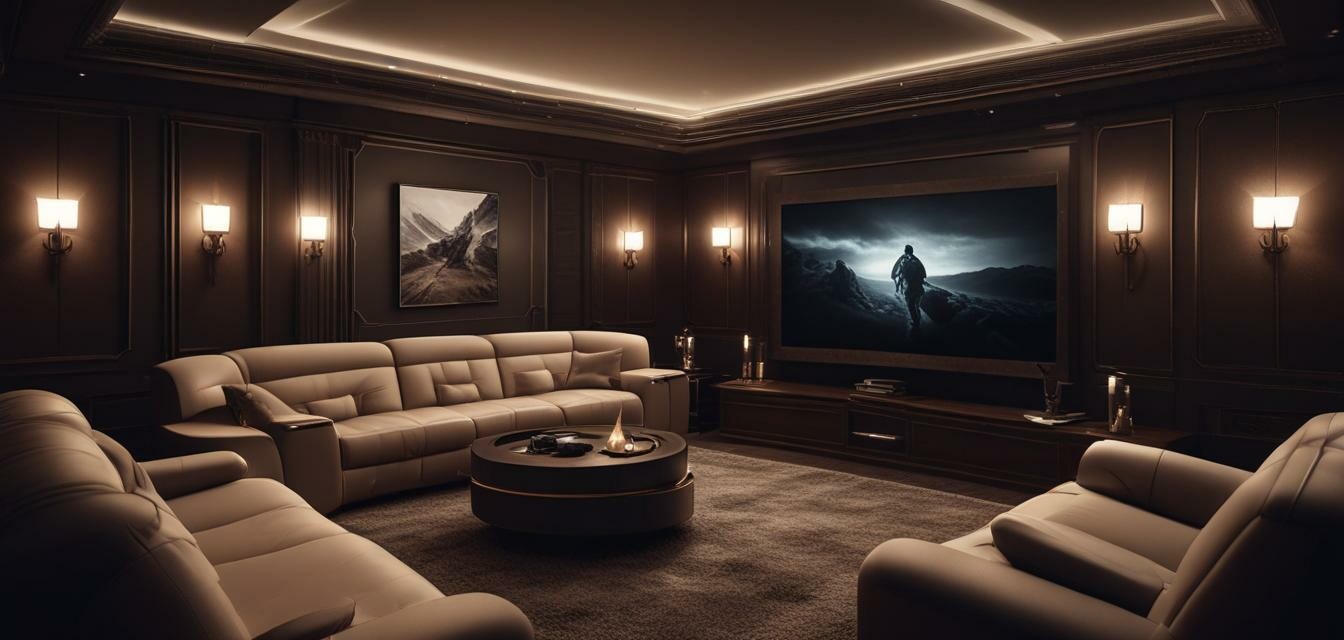
How to Set Up a High-End Home Cinema
Key Takeaways
- Choose the right room for your cinema setup.
- Select high-quality audio and video equipment for an immersive experience.
- Consider lighting and seating arrangements for comfort and aesthetics.
- Integrate smart home technology for seamless control.
- Enhance your experience with quality media players and surround sound systems.
Creating a high-end home cinema is a thrilling project that promises to elevate your entertainment experience. This step-by-step guide will walk you through the essential equipment selection and room setup considerations required to design the perfect cinema space in your home. Whether you’re a seasoned cinema enthusiast or stepping into this world for the first time, you’ll find valuable insights here.
1. Choose the Right Room
The first step in setting up a high-end home cinema is selecting the right room. Consider the following factors:
- Room Size: A larger room may require more powerful equipment.
- Acoustics: Look for a room with minimal outside noise.
- Lighting: Consider a room with the potential for blackout curtains.
2. Equipment Selection
Selecting the right equipment is crucial for achieving an immersive cinematic experience. Here’s what to focus on:
A. Video Equipment
Choosing the right display is one of the most important decisions you will make. Consider high-end televisions or projectors:
| Type | Description |
|---|---|
| Ultra HD Television | Provides crisp visuals with vibrant colors and excellent HDR support. |
| Projector | Offers a large image size, ideal for a true cinematic experience. |
B. Audio Equipment
Sound quality is equally important. Invest in a high-quality surround sound system to fill the room with immersive audio. Here are some options:
| Sound System Type | Description |
|---|---|
| 5.1 Surround Sound | A great entry point for surround sound with five speakers and one subwoofer. |
| 7.1 Surround Sound | Enhances the experience with additional speakers for improved spatial audio. |
3. Room Setup Considerations
Once you have your equipment in place, it's time to consider the physical setup of the room.
A. Seating Arrangement
Comfortable seating is essential for prolonged viewing. Consider:
- Reclining chairs for optimal comfort.
- Arranging seats in rows for better visibility.
- Aim to place seats at a distance that matches the screen size (around 1.5 to 2.5 times the screen size).
B. Lighting
Proper lighting greatly enhances the viewing experience. Keep these tips in mind:
- Install dimmable lights to control brightness.
- Consider using blackout curtains to eliminate outside light.
- Use softer lighting near seating areas for a cozy atmosphere.
4. Smart Home Integration
Incorporating smart home technology can greatly enhance your cinema experience:
- Smart remote controls can synchronize all your devices for ease of use.
- Voice control allows for hands-free adjustment of settings.
- Smart lighting systems can be programmed for the perfect ambiance.
5. Fine-Tuning Your Setup
After setting up your equipment, it's time to calibrate for the best experience:
- Adjust video settings for clarity and color balance.
- Calibrate audio settings to ensure balanced sound across the room.
Conclusion
Setting up a high-end home cinema can be a rewarding project that enhances your home entertainment. By carefully choosing your room, selecting the right equipment, and considering layout and integration, you’ll create a space that is perfect for movie nights and entertaining guests. For more tips on selecting specific devices, check out our Buying Guides section where we cover everything you need for the ultimate home theater experience.
Pros
- Elevates home entertainment experiences.
- Creates a customized viewing environment.
- Increases the value of your home.
Cons
- Can require significant investment.
- Space limitations may restrict setup options.
- Requires ongoing maintenance and upkeep.
